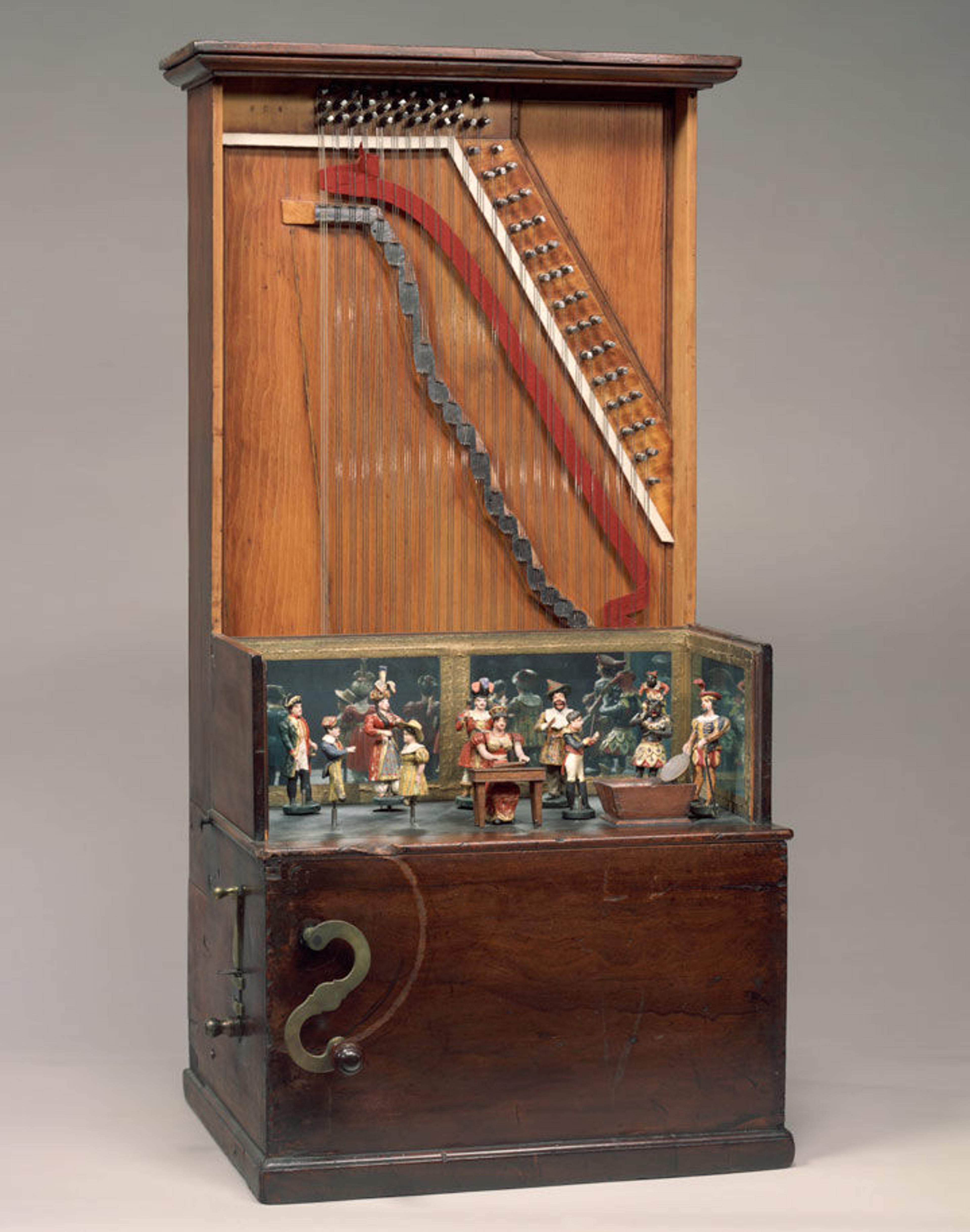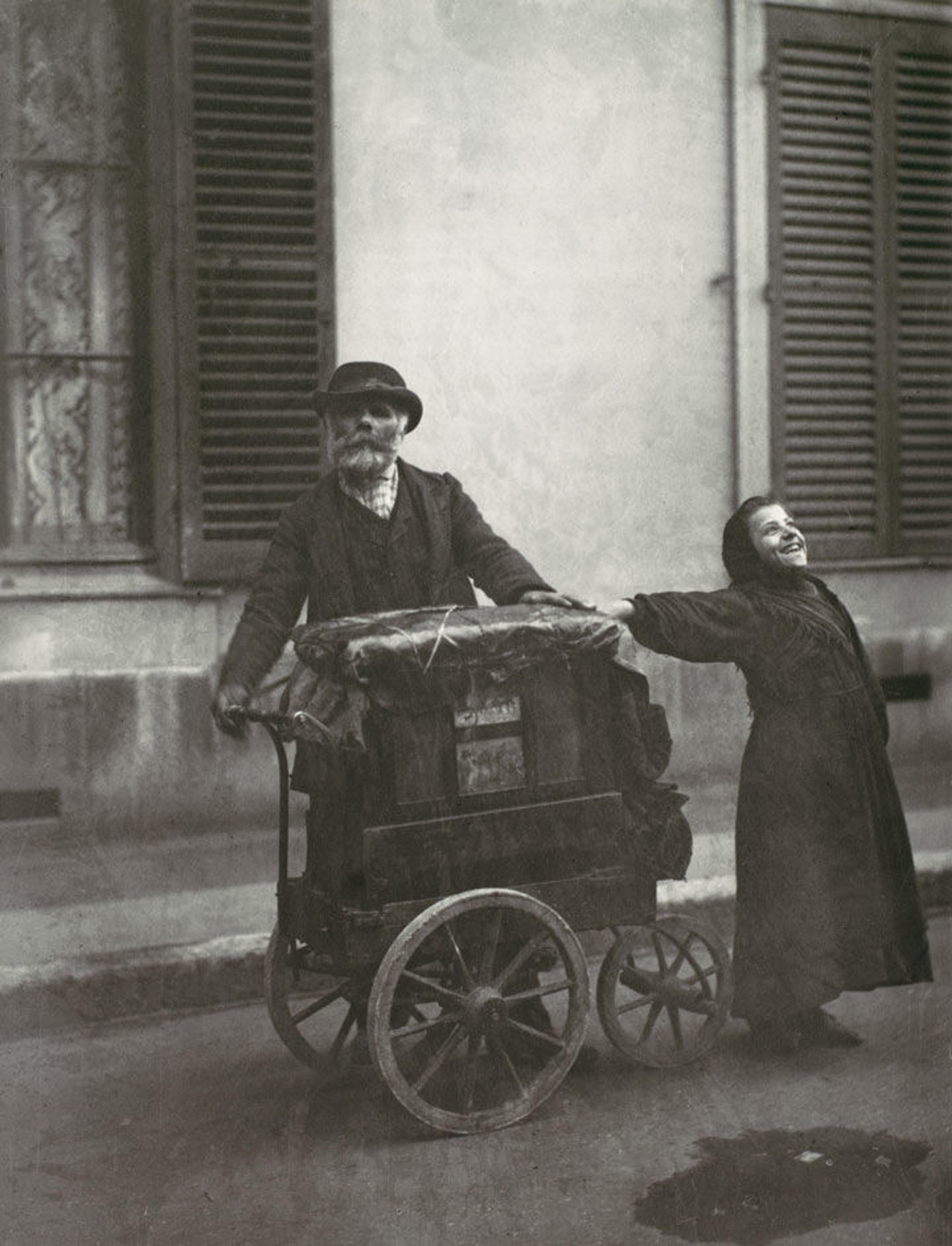A Yankee Doodle Instrument

George Hicks (British, 1818–1863). Barrel piano, ca. 1860. Brooklyn, New York, United States. Wood, various materials; Total: H. 92.7 cm (36 1/2 in.), W. 43.5 cm (17 1/8 in.). The Metropolitan Museum of Art, New York, The Crosby Brown Collection of Musical Instruments, 1889 (89.4.2048)
«Barrel pianos and barrel organs were common sights to city dwellers of the late 19th and early 20th centuries. Simple versions of the instruments look like boxes with cranks that rotate a wooden cylinder fitted with brass pins. When it spins, the cylinder pins engage the individual notes of the piano or organ mechanism to play a song.»
More expensive versions, like The Met's barrel piano by George Hicks of Brooklyn, New York, have small figurines that rotate and bob in time to the music. The Museum's example has costumed puppets including dancers, musicians, and a figure with a plate to collect coins that are then deposited into a trough.
Operators of barrel pianos and organs wandered city streets and would play a tune in exchange for coins. A dancing child or a begging monkey often accompanied these "musicians" to further dramatize the performance. Such a pair of French street performers can be seen in a photograph by Eugène Atget.

Eugène Atget (French, 1857–1927). Street Musicians, 1898–99, printed 1956. Gelatin silver print. The Metropolitan Museum of Art, New York, David Hunter McAlpin Fund, 1956 (56.610.16)
The cylinders that produce the music could play multiple tunes. In New York City, cylinders would often include folks songs from Ireland, Italy, or Germany that were meant to appeal to immigrants who had settled within a particular community. Most also included an American patriotic tune such as "Yankee Doodle," which can be heard here, performed on the Museum's barrel piano.
The barrel piano may have first appeared in Italy, but it is known to have been produced in Bristol, England, by members of the Hicks family as early as 1805. Although the family had primarily been cabinet makers, by 1816 Joseph Hicks had established himself primarily as a barrel piano and barrel organ manufacturer. John Hicks set up a workshop manufacturing the instruments in London. Yet another family member, George Hicks, moved to the United States and built, or assembled, barrel pianos there from at least 1849 until his death in 1863.
For more information about George Hicks and The Met's barrel piano, read American Musical Instruments in The Metropolitan Museum of Art, by Laurence Libin, on MetPublications.
Related Link
Of Note: Jayson Dobney, "A Patriotic Drum, for the Fourth of July" (June 30, 2014)
Jayson Dobney
Jayson Dobney is the Frederick P. Rose Curator in Charge in the Department of Musical Instruments.
Follow Jayson on Twitter: @JayKerrDobney